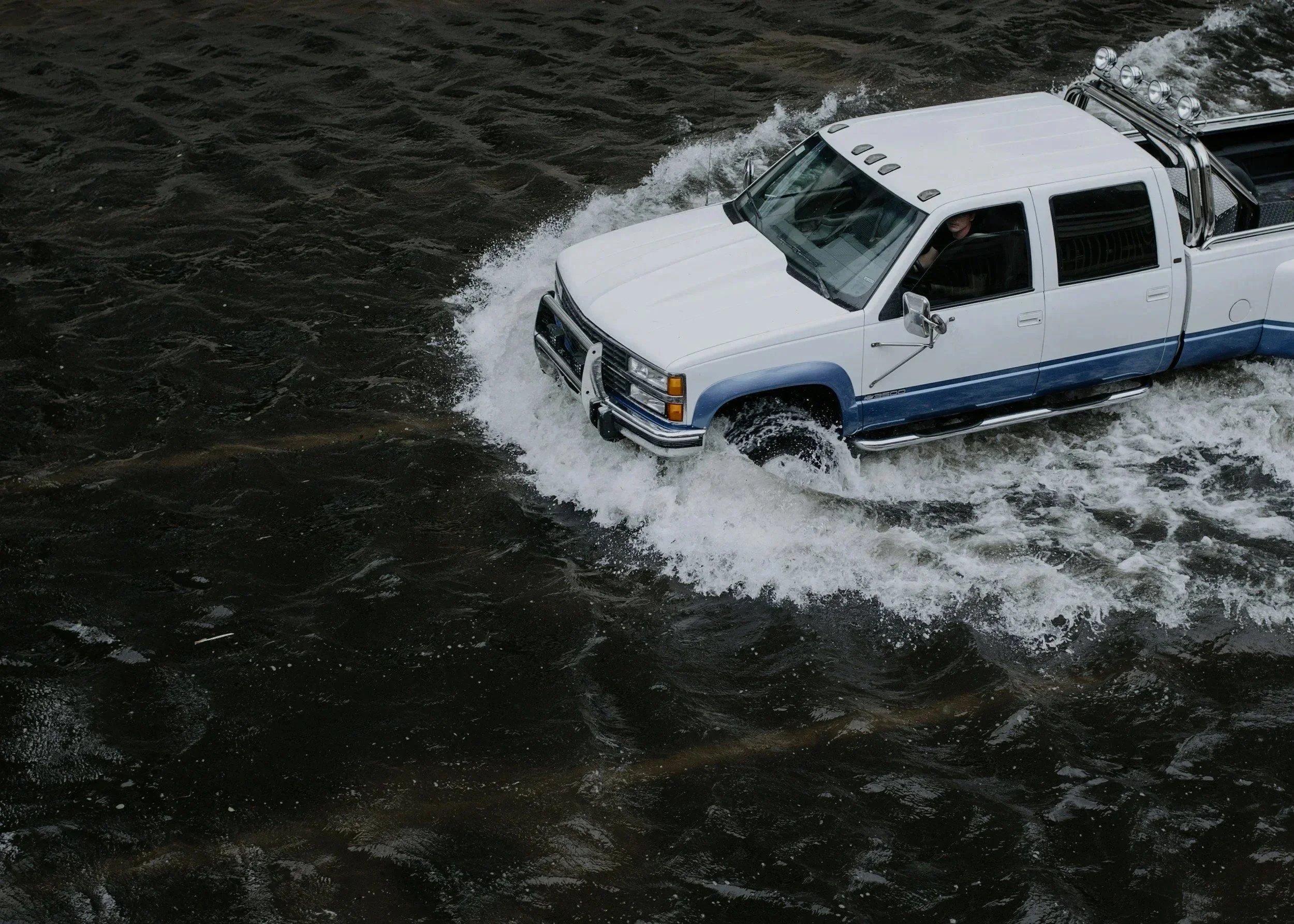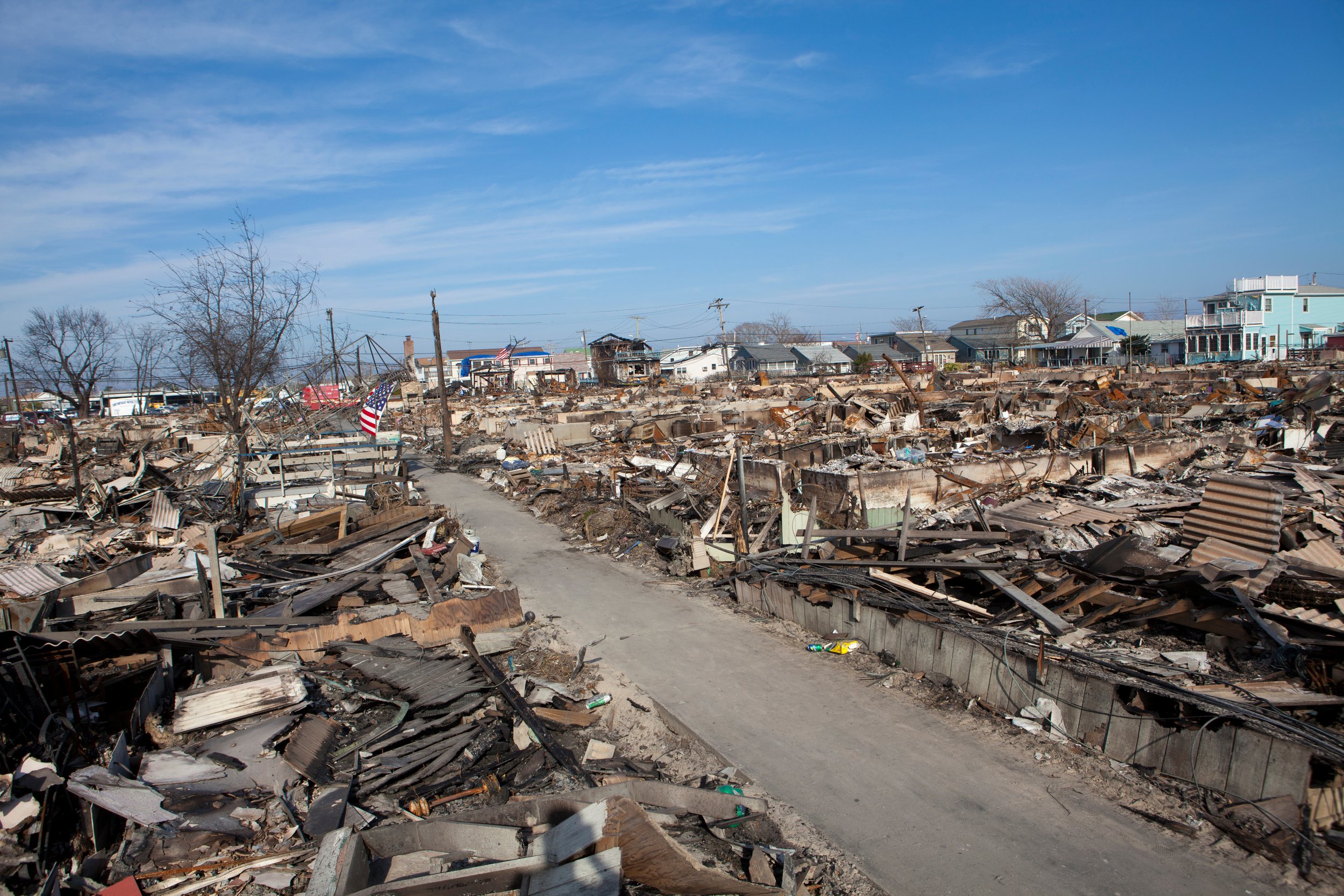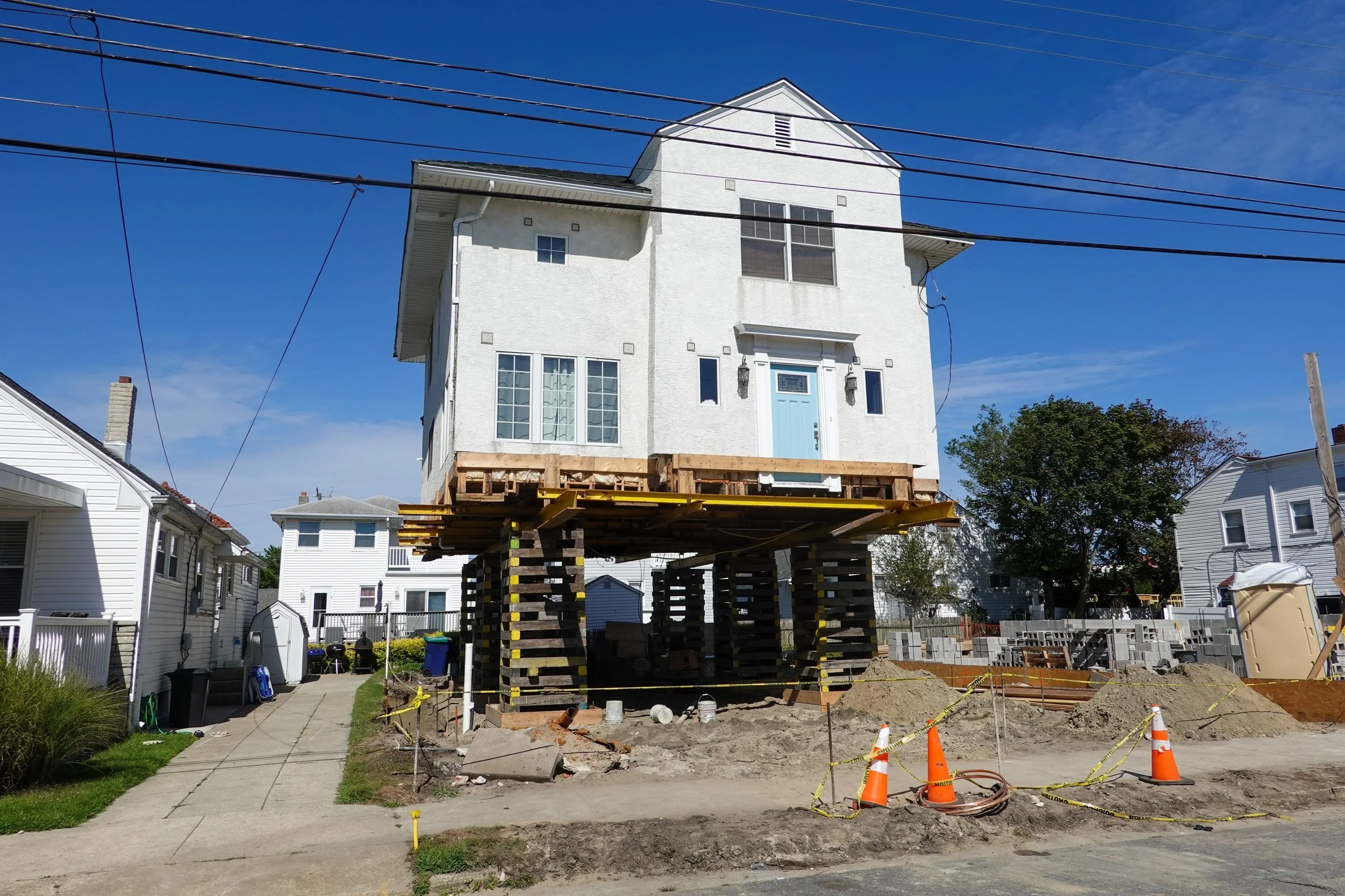
Climate Change is Changing the Jersey Shore!
Our Climate is Changing.
So Why Aren’t You?
Here is what’s at stake for coastal wildlife and people if we don’t act now!
House on supports as it is being raised to protect it from raising flood waters due to global warming .
If climate change continues unabated, nearly every ecosystem on the planet will alter dramatically, to the point of becoming an entirely new biome, according to a paper written by 42 scientists from around the world in 2018.
Particularly vulnerable will be coastal areas. The coastline of the United States is highly populated. Approximately 25 million people live in an area vulnerable to coastal flooding [1][2].
Climate change can affect coastal areas in a variety of ways, but members of Save Coastal Wildlife are currently examining three (3) leading influences of a warmer world to wildlife on or near a shoreline:
Click a button below to discover more about a specific topic.
This video, produced by the New Jersey Climate Adaptation Alliance, explores climate change and its effects on the Jersey Shore. Experts discuss temperature changes, sea level rise, coastal flooding, and ocean acidification and how this impacts communities, ecosystems and coastal economies. To learn more visit: http://climatechange.rutgers.edu http://njadapt.rutgers.edu http://www.njadapt.org

How Will Global Climate Change Likely Impact Your Life?
Destroyed homes from Hurricane Sandy in a Breezy Point neighborhood in the Far Rockaway section of New York City on November12, 2012.
2020 New Jersey Scientific Report on Climate Change
New Jersey Department of Environmental Protection’s (DEP’s) first scientific report on climate change summarizes the current state of knowledge regarding the effects of climate change on New Jersey’s environment to inform state and local decision-makers as they seek to understand and respond to the impacts of climate change. This report identifies and presents the best available science and existing data regarding the current and anticipated environmental effects of climate change globally, nationally, and regionally.
Read the full report.
Some key findings:
Since 1895, New Jersey’s annual temperature has increased by 3.5°F.
Since the industrial age, ocean pH levels have declined and the ocean is now 30% more acidic.
Southern New Jersey counties rank second in the United States in economic dependence on shelled mollusks, which will suffer from increasing ocean acidity.
Many commercially important shellfish species including hard clam, scallops, and oysters will develop thinner and frailer shells due to ocean acidification.
New Jersey may become unsuitable for specialty crops like blueberries and cranberries in the future as higher temperatures reduce necessary winter- chills.
Some New Jersey tidal wetlands may not gain elevation at a rate that equals the rate of sea-level rise and thus some are expected to be lost to increased rates of sea-level rise.
Atlantic white cedar, a globally rare species, is expected to lose habitat in New Jersey because of rising sea levels.
29% of New Jersey’s bird species are vulnerable to climate change, including the American Goldfinch which is the state bird of New Jersey.
Saltmarsh Sparrows, a globally endangered species, may reach quasi- extinction population numbers by 2040 due to habitat loss from sea-level rise.
Freshwater fish, like brook trout, that need cold-water habitats are expected to lose habitat as water temperatures increase due to climate change.
Reptiles, such as turtles, with temperature-dependent sex determination could experience changes in sex ratios as New Jersey temperatures increase.
Current climate changes could result in more “dead zones” from hypoxic events, which are of particular concern for summer flounder which is New Jersey’s largest recreational fish species.
As temperatures increase, environmental conditions in New Jersey estuaries may improve for invasive species like the clinging jellyfish.
What Happened to the Ice Age that was predicted in the 1970s?
In the mid 1970s, around the same time that a few very cold snowy winters were being experienced in most of the United State, some climate scientists were suggesting a cooling period or the arrival of another ice age. Articles in Newsweek, Time, and several other popular magazines and newspapers between 1974 and 1975 reported that the world was on the brink of a global ice age. Even the National Science Board in 1974 announced: "During the last 20 to 30 years, the world temperature has fallen, irregularly at first but more sharply over the last decade. Judging from the record of the past interglacial ages, the present time of high temperatures should be drawing to an end leading into the next ice age." Sounds scary, right?
So what happened?
First, many of those well-known articles calling for an ice age were printed for the interest of the general public, not in scientific journals for the critique of scientists. A survey of peer reviewed climate scientific papers from 1965 to 1979 showed that few papers predicted global cooling (7 in total), let alone another ice age. Significantly more papers (42 in total) predicted global warming (Peterson et al 2008).
In addition, those people suggesting the world might be entering into another ice age were implying that Planet Earth was at the end of an interglacial period, which is a “brief” intermission between ice ages. It began at the conclusion of the last glacial period, about 10,000 years ago. These relatively warm interglacial periods rarely last longer than 10,000 to 20,000 years. Our entire human civilization as we know it has developed within a short space of this last interglacial period. Thus, there was speculation by some in the 1970s as to whether the interglacial period might be over and the planet as a whole would enter into a period of global cooling.
Some people as well had overestimated the cooling effect of air pollution from industry and vehicles in the atmosphere and underestimated the effect of CO2 from the burning of fossil fuels. Meaning warming was more likely than cooling from air pollution and the burning of fossil fuels in the long run.
Scientists at present have much better tools and methods to study the environment and the climate compared to the 1970s. Many climate scientists (around 98 to 99 percent) now agree that the current warming trend is extremely likely (greater than 95 percent probability) and is the result of human activity since the mid-20th century and is proceeding at an unprecedented rate. Current data reveals a changing climate that is overall warmer, not cooler.
ADDITIONAL NEWS & REPORTS
SOURCES:
[1] FEMA (2008). Coastal AE Zone and VE Zone Demographics Study and Primary Frontal Dune Study to Support the NFIP. Washington, DC: Federal Emergency Management Agency Technical Report, 98p.
[2] USGCRP (2014). Moser, S. C., M. A. Davidson, P. Kirshen, P. Mulvaney, J. F. Murley, J. E. Neumann, L. Petes, and D. Reed, 2014: Ch. 25: Coastal Zone Development and Ecosystems. Climate Change Impacts in the United States: The Third National Climate As sessment, J. M. Melillo, Terese (T.C.) Richmond, and G. W. Yohe, Eds., U.S. Global Change Research Program, , 579-618.



